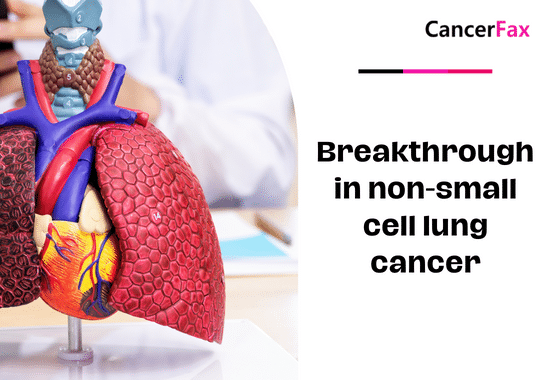Breakthrough in non-small cell lung cancer
There is the latest breakthrough in non-small-cell lung cancer. A kind of immunization that can treat non-small cell lung cancer (NSCLC) has experienced stage 3 clinical approval and has a great therapeutic impact on non-small cell lung disease. It is currently accessible in a very few countries.
People with lung cancer can get a vaccine that helps their bodies strongly react to certain glycosylated gangliosides (NeuGcGM3) that are found in cancer cells. Compared with the best supportive care, the lung cancer vaccine can improve the survival rate of patients with relapsed-stage and advanced (stage IIIB / IV) NSCLC.
Rather than numerous warm blooded creatures, including gorillas, we can’t recognize the nearness of NeuGcGM3 gangliosides in typical human tissues and liquids. Be that as it may, NeuGcGM3 gangliosides are profoundly communicated in certain human malignant growth cells. In non-little cell lung malignancy tests, gangliosides were identified in over 90% of non-little cell lung tumors. Thusly, NeuGcGM3 ganglioside can be utilized as a ground-breaking objective for lung malignant growth antibodies.
After the insusceptible framework produces explicit antibodies against an antigen, it can create antibodies against the uniqueness of the main antigen, which can control the resistant framework from within. In the wake of being immunized against this lung malignant growth immunization, it can advance the generation of antibodies against this antigen, assigned Ab1. These Ab1 antibodies are fit for delivering a progression of hostile to idiotypic antibodies, assigned Ab2. These unique antibodies have their own idiotypes attached to the antigen-restricting site of Ab1.
This makes these unique antibodies produce a reaction that is resistant to common antigens. So, getting vaccinated with Ab2 can speed up the production of Ab3, which is an agent that fights against idiotypes and can recognize the first antigen that Ab1 sees. Some Ab2 antibodies of this sort invigorate the safe framework to actuate defensive resistance against tumor antigens.
It has been clinically demonstrated that lung disease immunization is very effective and has better execution. Numerous basic symptoms happen just locally (infusion site) and are generally gentle and of brief length. Regardless of whether the antibody is given to patients after their condition has disintegrated, their general endurance has improved.
At present, this kind of lung malignant growth immunization isn’t promoted in India.


